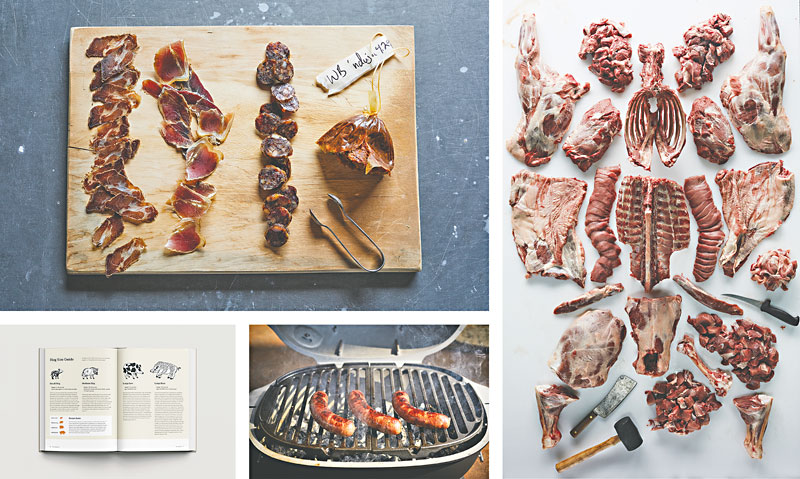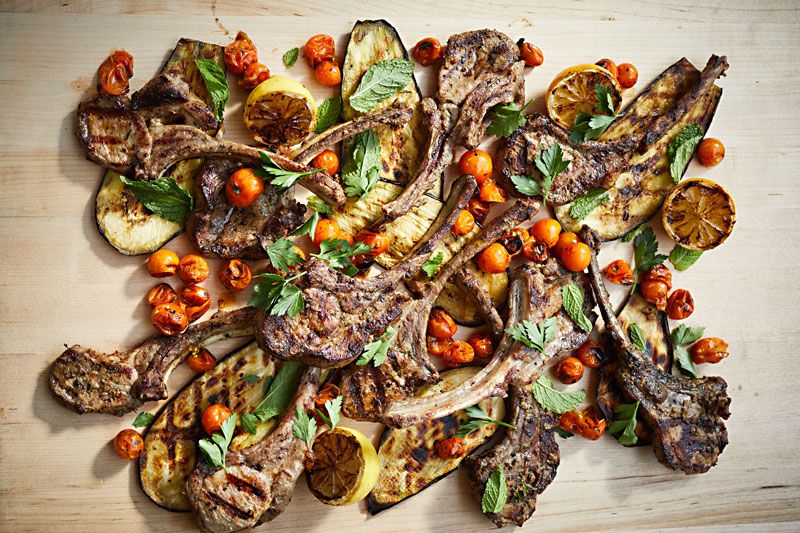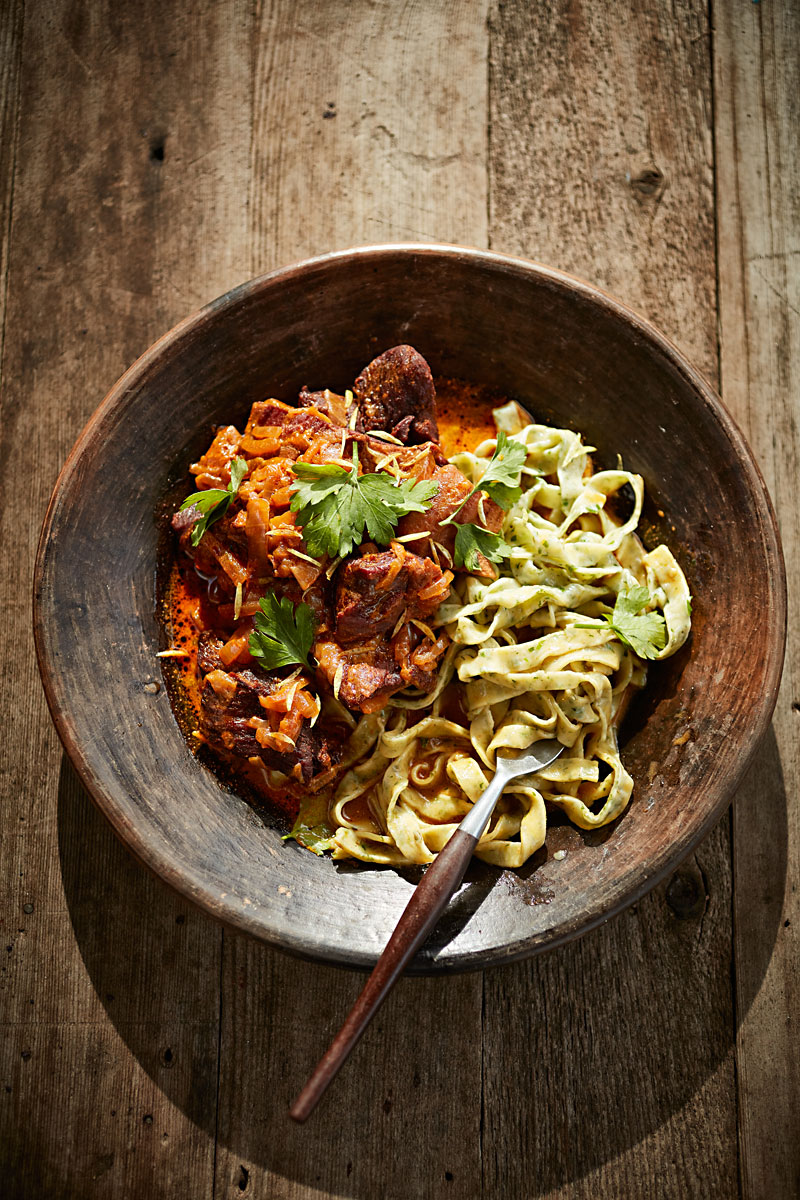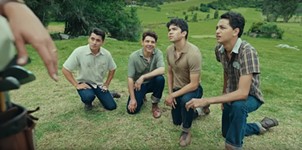Hog Book Aims to Encourage Hunting and Eating Feral Hogs
Jesse Griffiths wants you to #EatAHogSaveTheWorld
By Jessi Cape, Fri., Aug. 6, 2021
"We've all changed a little," Jesse Griffiths, hunter extraordinaire and chef/owner of Dai Due, said of the past year. Despite some necessary pandemic adjustments, both his East Austin restaurant and New School of Traditional Cookery hunting classes are open and well, and Griffiths' latest project, The Hog Book: A Chef's Guide to Hunting, Preparing, and Cooking Wild Pigs, is making waves in the world of ethical hunting and sustainable food sources.
Where Griffiths' first book, Afield, published in 2012, offers a broad approach, this sophomore effort is a "start-to-finish" definitive field guide to hunting feral hogs specifically. The massive 420-page tome – which became the fourth highest earning cookbook campaign in Kickstarter history – features multiple methods for processing and butchering wild boars, with step-by-step photography from award-winning Jody Horton. It's also a textbook full of history lessons, hunting stories, safety, and best practices for each downed pig, and of course, it's also a wild game cookbook sure to be a classic. Diagrams and anecdotes illustrate techniques, and the book boasts over 100 corresponding hog-forward recipes including sausage making, classic cuts, curing, sauces, side dishes, and more. We caught up with Griffiths to talk about his self-published and self-distributed Hog Book.
Austin Chronicle: It has to be really rewarding to know this many people are interested in buying a 400-page book about hunting hogs. When did the idea start percolating?
Jesse Griffiths: Before Afield we had at least started to play with this next idea to focus on one species – and it was really obvious what that species would be. The bulk of the work was done in the last two years, and the most helpful driving factor in writing this was the volume of questions I've been asked about feral hogs in the last decade. When I do a hog butchery class and someone asks a question – like "Can you eat a boar over 200 lbs.?" – I registered that, put it in a file. When I get asked that 10 times over a year, I want to address it. So here I was able to really compile the data, the needs of the constituency, what they want, what they need to learn in order to accept hogs as a food source more readily and with more confidence. ... Reaching nonhunters means more hunters on board, and that's when you can address proper processing techniques, good recipes, being able to dress a hog specifically for the properties that medium hog or large sow has. So they are getting more out of it, the kids will eat it, because they're doing it right.
AC: Jody Horton shot the photos again, and even the photos of the guts are somehow not repulsive.
JG: Right, and they shouldn't be. [Jody and I] work together very well and he understands the ins and outs of hunting: He knows how to be quiet, how to move, how to stay out of my way, and when he needs to be in my way, at what angle – he also trusts my perspective a lot. His incredible skill set in photography [means] he's able to make something that's, let's be frank, ugly – hogs ain't exactly pretty and some gore has to happen in order to get that beautiful food shot – you know, we wanted to present that in a really beautiful way and I think he achieved that. I think softening all of that is very key – it goes back to that 200-lb. boar: People are on the fence about this subject. I'm like, either I have the worst palate in the world or they actually taste great.
We knew the demand was there, we knew people had a lot of questions, and market research indicated there's nothing out there in any depth that teaches you about hunting hogs, or in the format of this book. I had to maintain a simple straightforward balance – not too preachy or overly technical – but we had to explain to people you can't just treat every hog the same way or you'll set yourself up for failure. And that failure contributes to what I call the generational misinformation that surrounds pigs. Back to the 200-lb. hog metaphor, that you can't eat it? You absolutely can. But if you treat it like a 30-lb. pig, you're gonna fail and then you confirm what you believed.

AC: You have a sort of built-in demographic, of, let's be honest, Texans that want to shoot things. But many are accustomed to certain belief systems about wild hogs because their land has been destroyed. What do you hope this book can do in terms of shifting the mindset, shifting the narrative, squaring up facts, reducing the myths?
JG: Well, obviously I am a fierce advocate of killing pigs, but I don't believe in being cruel about it. I draw a firm line on that. But I understand the need for a landowner to kill as many of those pigs as possible. I would like to see, once they're dead, see them utilized in, let's just say, in a more positive way. Enjoy what they've got. If you're a landowner and you just planted corn and you go out there at night and shoot 30 pigs, is it my expectation that you're going to process 30 pigs? No, it is not. If you were to pick out the best one out of the bunch and use my book to enjoy it, I feel like my work is done. Before you were just going to throw that one away. ... And every time you do that, not only are you eating a pound of wild meat that was taken from an invasive species, you're also purchasing one less pound of meat that was taken from a very broken [food] system. There are a lot of utopian sentiments too ... where I'd like to see these animals utilized to their fullest, where someone who doesn't have food could eat them, but that's oversimplified and there's a lot of speed bumps in the way. But I want to start conversations about it, and I think the first step is hitting the reset button – thinking about what these hogs represent in a more positive way.
I am an avowed pig hunter. I utilize them all – I'm not even saying that I judge someone who does not, but taking joy in their suffering is a separate deal. So if we can just shift our collective outlook a little bit to be more respectful of these animals that we brought here – it's not like they invaded on their own – the same European settlers that settled this entire continent brought with them this problem and through our own impulses and things we've done to the land and the way we manage ranches and private property, this and that, has likewise contributed to this population explosion. We created the problem and we need to figure it out, collectively, how to fix it ... through a better lens. But the fact remains that each one of these is an individual animal that feels pain and wants to live. No animal should suffer. I want all these pigs to die quick honorable deaths and then we can move forward from there. But hitting a collectively reset button on how we see these pigs and how they can be used would benefit us all.
AC: Is it just logistically that people can't sell big quantities of boar like Central Market style? Is it supply and demand?
JG: There are a couple things. If you look at how we serve it in the restaurant, we very rarely serve it like a boar chop. If we do, we have nine of them and they'll be gone Thursday evening and that's it. We aggregate everything else. In our production system, which is a trapper and processor, the trapper brings the pig live to the processor, and there's an inspector at the processor that gives an antemortem inspection. He sees the pig, it appears to be healthy, the hog is killed, and then the inspector inspects the carcass for anything notable on the carcass that would indicate there's something wrong with it. That pig could be anywhere from 20-200 lbs., and if we order five of those, we don't know which five we'll get therefore those chops can be anywhere from 2 oz. to 18 oz., so that's not any way to go about it. So we aggregate all of [the meat] and we grind them, or make a confit, which is why we have that signature dish, wild boar confit, and that enables us to use any size hog.
Now you take that and put it into a larger production system and the same issue presents the same problem. You have not only inconsistency in size, but in fat content, and flavor. You could have a very lean big boar trapped in South Texas, you could have a boar the same size trapped southeast of here near Lockhart that could be loaded in acorn fat and one of the most delicious pigs you'll ever have, but they are literally two different animals. So to have consistency in product – another thing the average American consumer absolutely demands – you can't really have that at a grocery store unless it's aggregated like grinded, sausage, or slow cooked in some way. That's [just one] issue.
AC: So many people stick to cooking and eating boneless skinless chicken breasts – arguably the least flavorful meat, with a direct correlation to factory farming. Your book has so many familiar recipes, like boar parmesan, that are, of course, delicious, but also bridging the gap for people who can't imagine eating wild hog simply because they haven't had it. Are people more interested in game meats after trying dishes at Dai Due?
JG: Yes, absolutely. How do you convince someone to eat something that they are scared of? Do you put a huckleberry foam on top of it and braise it for nine hours? Or sous vide it? Make a blood sauce? No! You put it into the most familiar form. You give them an excellent recipe that not only is familiar and comforting to them, but there's a trick or two incorporated in the recipe to help a leaner game meat or potentially strongly flavored game meat become more acceptable. Put everything in a familiar format. There are boar burgers, meatloaf, sausages, all kinds of things that people will eat on a daily basis. I want this book to be broken out on Tuesday for dinner, not necessarily on Saturday. And that's how we're going to tackle this problem, as a daily thing. People are way more likely to try it, and like it, if they say, "a friend gave me one pound of ground wild pig, and I wouldn't normally eat this," but they can make meatballs or something they love out of it. Ground meat is the best starting point for people to cook with. You can make a burger out of any ground animal and it'll probably be pretty good. That's one way. But there's also other impediments to making it mainstream. I'm not saying I have all the answers, but I sure would like to be part of the conversation in getting there. At the same time you have to watch out for putting value or monetizing feral hogs – and I've already seen this – you'll have people trapping the hogs, feeding them, and breeding them. That's the opposite direction.
AC: If you had to name one favorite recipe?
JG: Personally, I'm a big fan of the paprikash, I love that dish, and it has a lot of balance – acid from tomatoes and paprika and onion and caraway – and I like the little side dish noodles recipe that's included. The schnitzel. If I had to admit what we eat the most, it's cutlets, so things like the parmesan or just straight-up fried cutlets are very good. A lot of it is not exactly groundbreaking – I put a burger recipe in the cookbook, but I don't want people to think they're throwaway recipes. I'm putting ideas out there. The po'boy is really good. It is boar specific and requires a loin or moderately fatty cut off the hog, to achieve that, it's not as wild game ambiguous. You could do it with elk I guess, but really it's best with a pig.
The Hog Book is currently back-ordered due to high demand, but available for preorder at thehogbook.com; Dai Due is open for dine-in and pickup; @newschooloftraditionalcookery hunting classes are available. See Chroncle Cooking for the boar parmesan recipe.
Business, Recipe, Restaurant, Seasonal, Single Food













